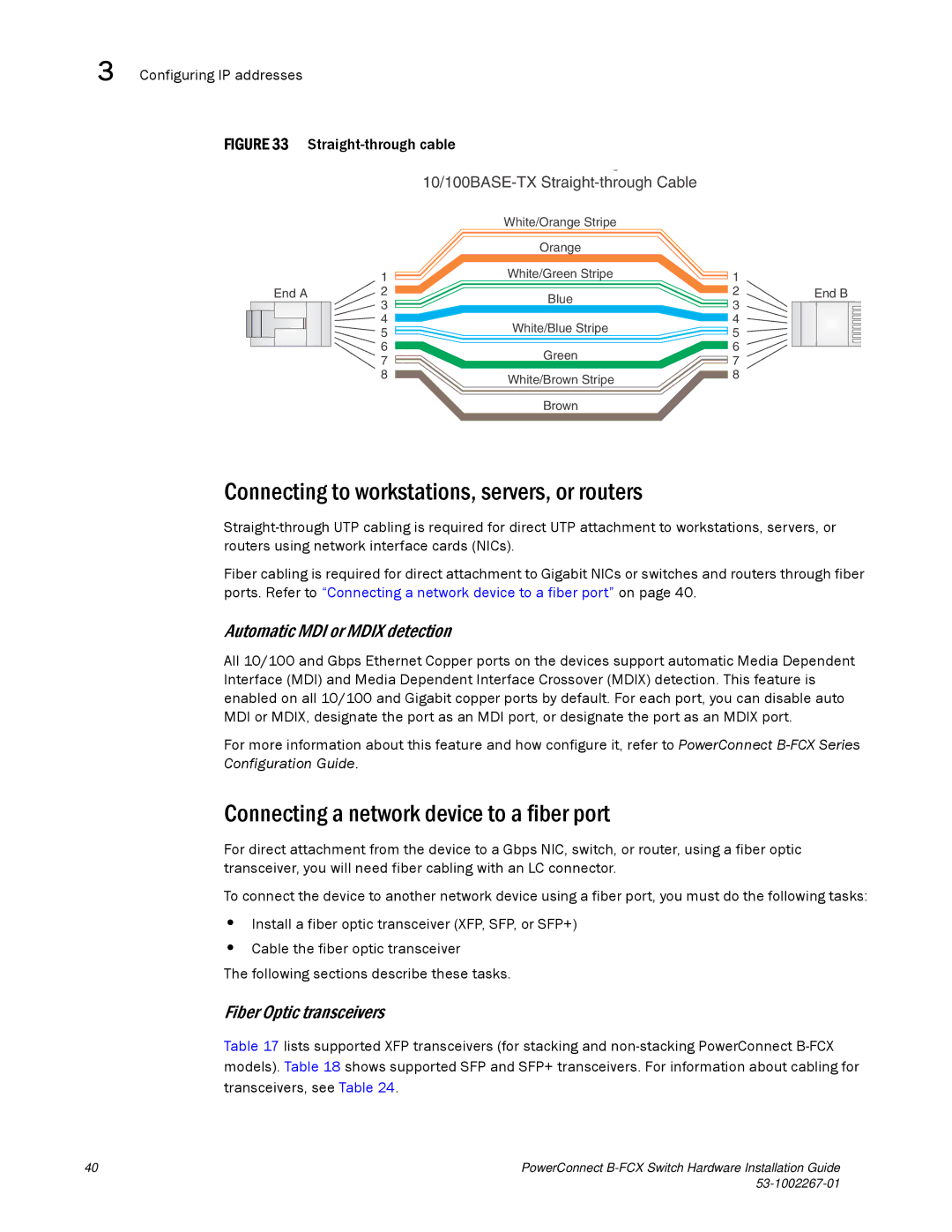
3 Configuring IP addresses
FIGURE 33 Straight-through cable
10/100BASE-TX Straight-through Cable
White/Orange Stripe
|
| Orange |
|
|
| 1 | White/Green Stripe | 1 |
|
End A | 2 | Blue | 2 | End B |
| 3 | 3 |
| |
|
|
| ||
| 4 | White/Blue Stripe | 4 |
|
| 5 | 5 |
| |
|
|
| ||
| 6 | Green | 6 |
|
| 7 | 7 |
| |
|
|
| ||
| 8 | White/Brown Stripe | 8 |
|
|
|
|
|
Brown
Connecting to workstations, servers, or routers
Fiber cabling is required for direct attachment to Gigabit NICs or switches and routers through fiber ports. Refer to “Connecting a network device to a fiber port” on page 40.
Automatic MDI or MDIX detection
All 10/100 and Gbps Ethernet Copper ports on the devices support automatic Media Dependent Interface (MDI) and Media Dependent Interface Crossover (MDIX) detection. This feature is enabled on all 10/100 and Gigabit copper ports by default. For each port, you can disable auto MDI or MDIX, designate the port as an MDI port, or designate the port as an MDIX port.
For more information about this feature and how configure it, refer to PowerConnect
Connecting a network device to a fiber port
For direct attachment from the device to a Gbps NIC, switch, or router, using a fiber optic transceiver, you will need fiber cabling with an LC connector.
To connect the device to another network device using a fiber port, you must do the following tasks:
•Install a fiber optic transceiver (XFP, SFP, or SFP+)
•Cable the fiber optic transceiver
The following sections describe these tasks.
Fiber Optic transceivers
Table 17 lists supported XFP transceivers (for stacking and
40 | PowerConnect |
|
